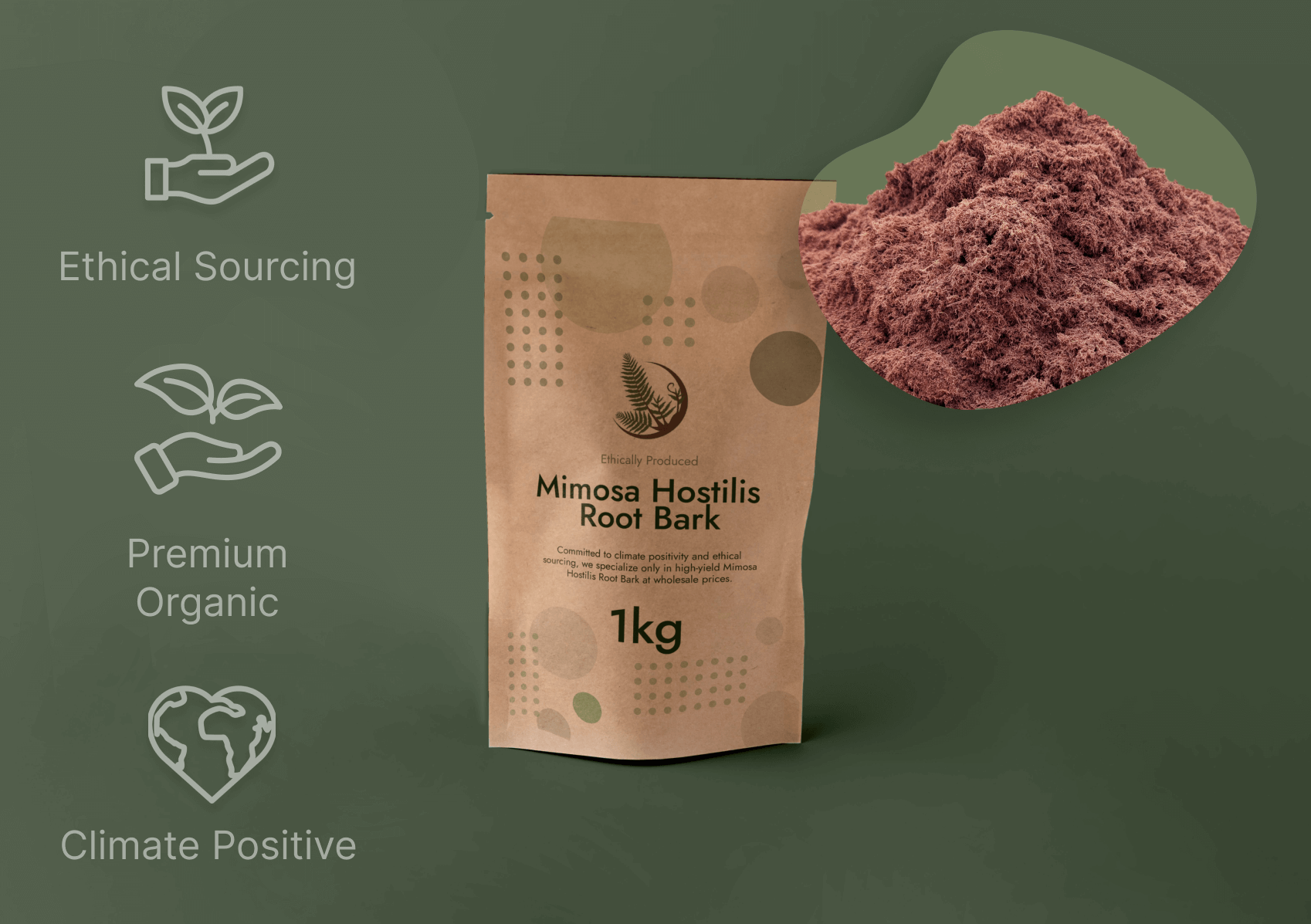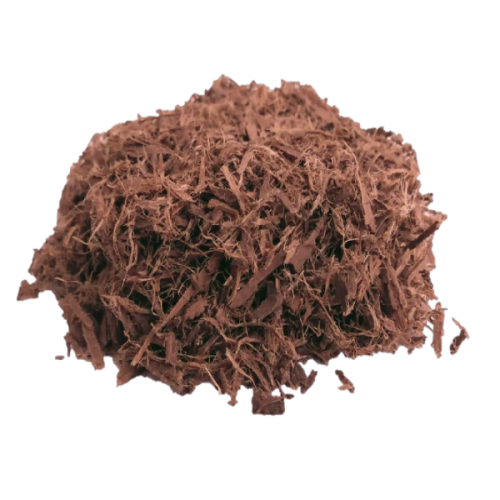Mimosa Hostilis Root Bark: A Guide to Origins and Employs
Wiki Article

Mimosa Hostilis Root Bark retains a major place in common techniques and present day botanical purposes. This text explores the qualities, origins, and customary queries encompassing this amazing plant material, with a selected center on the prized Brazillian Mimosa Hostilis Root Barks.
What's Mimosa Hostilis Root Bark?
Mimosa Hostilis, scientifically known as Mimosa tenuiflora, can be a perennial tree native on the northeastern region of Brazil and aspects of Mexico. The foundation bark of this tree has been used for hundreds of years by indigenous communities for a variety of practical and regular reasons. The internal root bark has noteworthy concentrations of tannins, alkaloids, and various phytochemicals that contribute to its exclusive Attributes and programs.
The tree alone is remarkably resilient, capable of surviving in weak soils and drought circumstances. This hardiness contributes to the strong mother nature from the bark and its chemical profile. When harvested sustainably, the outer root bark is diligently separated to access the precious inner bark, which can be then dried and ready to be used.
Brazilian Mimosa Hostilis Root Bark: The Gold Regular
When discussing high-quality in Mimosa Hostilis products and solutions, the Brazillian Mimosa Hostilis Root Barks are generally regarded excellent during the botanical sector. Numerous aspects add to this standing:
Optimal Rising Circumstances
The precise soil composition, climate, and ecosystem of Brazil's northeastern location create excellent circumstances for Mimosa tenuiflora to establish its full chemical opportunity. The mineral-prosperous soils and particular pattern of rainfall and daylight On this area look to reinforce the concentration of Energetic compounds in the root bark.Regular Harvesting Know-how
In areas where by Mimosa Hostilis is utilised traditionally, harvesters have created complex solutions for sustainable harvesting that preserves each the tree and also the potency with the bark. This knowledge, handed down by generations, ensures that the bark is gathered at the appropriate time of yr and processed applying approaches that manage its integrity.Distinct Bodily Properties
Brazilian Mimosa Hostilis Root Bark commonly displays a rich reddish-brown to purple interior bark by using a fibrous, dense texture. The Visible attributes generally serve as an Preliminary indicator of excellent, with seasoned consumers recognizing the distinct visual appearance of bark from this location.
Common Apps and Utilizes
The apps of Mimosa Hostilis Root Bark span both of those conventional and modern-day contexts, though It is really vital to grasp the authorized standing of those takes advantage of may differ by nation and jurisdiction.
Conventional Craft and Apply
Indigenous communities have Traditionally applied Mimosa Hostilis Root Bark for producing pure dyes for textiles, While using the bark producing stunning shades of purple, burgundy, and deep brown. The tannin-prosperous Qualities also designed it worthwhile for leather tanning along with other simple programs.Contemporary Botanical Exploration
Up to date curiosity in Mimosa Hostilis Root Bark extends to varied fields of botanical analysis, particularly researching its Mimosa Hostilis Root Bark chemical composition and likely purposes. Researchers have determined a number of interesting compounds in the bark that warrant even further scientific investigation.Horticultural and Agricultural Uses
In permaculture and sustainable agriculture, Mimosa tenuiflora is valued for a nitrogen-repairing species that can boost soil quality. The bark by itself, when processed, may be used for a pure mulch or soil Modification in particular agricultural contexts.High quality Assessment and Identification

For anyone working with Mimosa Hostilis Root Bark, knowledge the best way to evaluate good quality is critical. High-good quality materials, particularly genuine Brazillian Mimosa Hostilis Root Barks, ordinarily displays particular attributes:
The visual visual appearance need to show a transparent distinction concerning the outer and inner bark, with the internal bark exhibiting deep, lively colours. The material should have a attribute earthy, a little bit sweet aroma, free from musty or moldy notes. When processed, the bark need to produce a fantastic powder although preserving its fibrous construction until grinding. Properly dried bark should be brittle but not dusty, indicating right moisture written content.
Routinely Questioned Thoughts (FAQs)
one. Exactly what is the difference between Mimosa Hostilis Root Bark from Brazil and various locations?
Brazilian Mimosa Hostilis Root Bark is usually deemed remarkable due to the optimum growing problems in northeastern Brazil, which bring about better concentrations of Energetic compounds. The traditional harvesting strategies employed Within this area also lead to the general high quality and potency of the ultimate item.two. How need to I retail outlet Mimosa Hostilis Root Bark to keep up its good quality?
Retailer the bark in a very cool, darkish, and dry area in an airtight container. Defense from mild, humidity, and Excessive temperature fluctuations may help protect the bark's chemical integrity and prevent degradation of its Lively factors.three. Is Mimosa Hostilis an endangered species?
No, Mimosa tenuiflora is not at this time outlined as an endangered species. In reality, it's noted for its resilient development and ability to thrive in complicated disorders. However, responsible harvesting methods are still vital to ensure the sustainability of wild populations.four. Can I increase Mimosa Hostilis outside of its native habitat?
Although Mimosa tenuiflora thrives very best in its indigenous tropical weather, it might be cultivated in very similar environments. The tree demands nicely-drained soil, loads of daylight, and safety from frost. Even so, the chemical profile of cultivated specimens may perhaps differ from wild-harvested Brazilian materials.five. What's the authorized position of Mimosa Hostilis Root Bark?
The authorized position varies appreciably by place and jurisdiction. In a few areas, the Uncooked bark is lawful to possess, while in Other people, distinct extracts or preparations may be regulated. Generally research and adjust to nearby laws and rules in advance of getting or utilizing any botanical substance.Being familiar with Mimosa Hostilis Root Bark, particularly the high quality Brazillian Mimosa Hostilis Root Barks, requires appreciation of its botanical features, classic context, and acceptable programs. Regardless of whether for research, craftsmanship, or botanical study, this amazing plant content proceeds to get a subject of fascination across multiple Mimosa Hostilis Root Bark fields, even though normally in just suitable lawful and moral boundaries. Report this wiki page